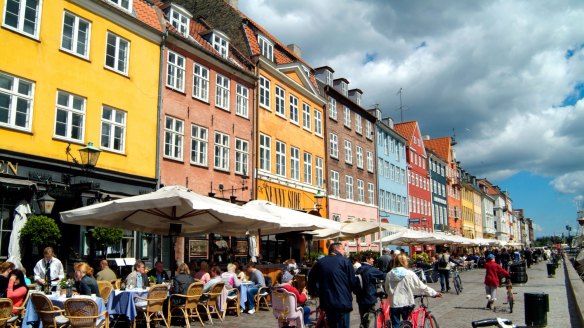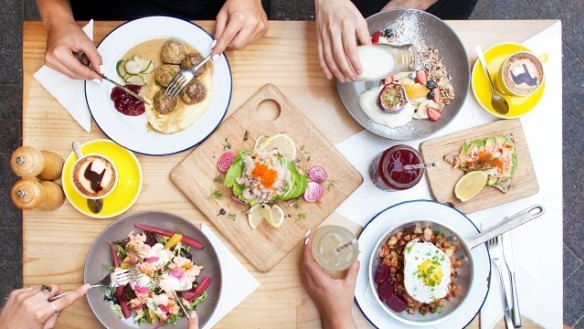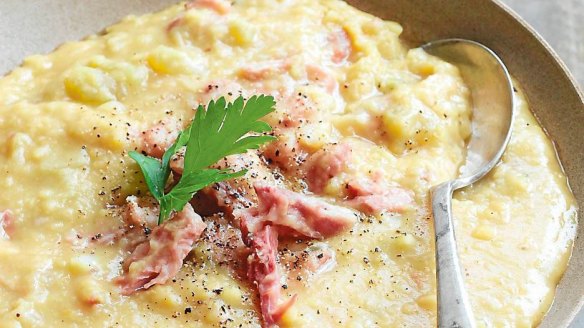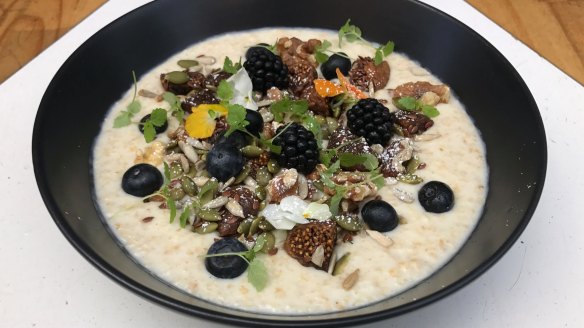How to bring hygge to your plate

Grey days already threatening to tempt you into the arms of a warm, buttery croissant?
What if one simple concept was all you needed to bring a dose of health and happiness to meal time and stop you from the temptation of empty-calorie, empty-feeling foods this winter?
Meet hygge - the Danish buzzword making its way throughout the wellness world.

Think of it as a hug to your health; the term as defined by the Oxford Dictionary expresses "a quality of cosiness and comfortable conviviality that engenders a feeling of contentment or well-being."
Through the cultivation of cosy rituals, the Danes manage to survive harsh winters and not only survive, but thrive! Currently ranked the world's happiest country according to Columbia University's World Happiness Report, it appears we could all do with a hint of hygge.
So, how do we bring it into our daily life and more importantly, meal time? It all begins switching our thoughts from what 'comfort food' is to what comfort really means to us.
"When you are in a cosy comfortable environment, it promotes mindful eating and slowing down."
Diana Chirilas, part owner of Fika Swedish Kitchen in Sydney, defines hygge as 'slowing down and enjoying the moment.' For Chirilas, the Scandinavian food culture is very much entwined within their day-to-day lifestyle. 'Fika' itself translates to a similar Swedish concept meaning to 'take a break for coffee and a bite to eat.'
For Chirilas, Fika embodies the concept of 'a cosy escape or refreshing pause.' She believes the Scandinavian way of life - finding contentment in daily moments such as enjoying coffee or a food break, is what hygge is all about.
"When we opened Fika we were longing for a space where people could feel at home. We ended up creating such a homely space that people always say to us - 'why are you so happy all the time?'"
The answer for her is simple: gratitude. "There are worse places in the world than spending a day with friends in a beach suburb like Manly, drinking coffee and enjoying treats that come out of the kitchen," says Chirilas.
At its heart, she believes hygge boils down to having a happy place and happy moments. "That's what we try to create through our culture at Fika. The only worries we want people to have is making sure they have copious amount of coffee, sneaky treats, lots of candles and maybe a rug in case it gets cold, to ensure a hygge state is retained at all times," says Chirilas.
And so far Australians are already very receptive to it.
"We had 150 people show up to celebrate Lucia - a Christmas carol tradition where a small choir sang Swedish carols. We sold mulled wine and saffron buns and put a lot of effort into making sure we had the right ambience. The hygge levels were sky high and were thrilled so many people joined us," says Chirilas.
But even for those unaccustomed to Scandi traditions, it's all a matter of interpreting hygge in our own way when it comes to meal time. And most importantly, making sure we indulge in the moment, not the sweet stuff.
Italian chef and restaurateur Alessandro Pavoni of Sydney's Ormeggio and Sotto Sopra believes the concept has far-reaching potential across any culture.
"Some styles of food and dining instantly elicit feelings of cosiness and comfort. For example Italian trattoria food or sharing concepts are so cosy, you can't not enjoy eating in this way. Or even cooking is nourishing in itself when done at home with family and friends."
In contrast, for Lino Sauro, executive chef and co-owner of Olio restaurant in Sydney, hygge is all about the right ingredients.
"When you have an intimate connection with the ingredients and the people you are cooking for, that is when the food is cosy."
"I love a warm vegetable or chicken soup with small egg pasta or the seafood stew we make at Olio. In fact, any dish can be tailored to be of healthy comfort in winter if you add a little extra spice to it," says Sauro.
Jess Sepel, a Sydney-based nutritionist and author of The Healthy Life, is a true believer of the concept and cultivates it whenever she can.
"To me, creating a cosy and nourishing environment at home when I eat is what hygge is all about. For example, when I'm hosting a dinner party I love being in comfortable clothes, using dim lights, candles and blankets to make a room look lovely and inviting - it makes me excited to eat," says Sepel.
As a nutritionist, Sepel believes environment is crucial part of the food choices we make, both healthy and not so healthy. "When you are in a cosy comfortable environment, it promotes mindful eating and slowing down."
Hungry for a slice of the hygge pie? We asked the experts for their tips on how to go hygge at home …
Five ways to bring hygge to your plate
1. Go wild
"During winter I like to cook with more wild vegetables such as swiss chards, artichokes and wild asparagus, they are all great for you," says Lino Sauro.
2. Savour every mouthful
"Sit away from your phone, emails and TV - they can shut down your digestive system and cause you stress. Instead, focus on mindful eating. To do this, slow down and engage with the eating process and look at how the food tastes, smells and looks," says Sepel.
3. Soothe with spices
"In Sweden Christmas is the highlight of the long winter months. Cloves, cardamom, cinnamon, ginger and orange are used in all our traditional Christmas dishes including mulled wine and tea. To us, these ingredients have become feel good ingredients reminding us of the cosy and magical time of Christmas," says Chirilas.
Sepel also recommends spicing up a bland veggie bowl by sauteeing in coconut oil and adding turmeric, cumin and chilli flakes.
4. Pretty up your plate
"Present food nicely on a clean, crisp white bowl or plate and then add fresh herbs to garnish," says Sepel.
Chirilas also recommends nice cutlery. "We add a level of cosiness to the food interaction at Fika by offering timber knives to spread the butter on our toast with. Timber butter knives are found in all Scandinavian households and are much loved and enhance the experience in our customers eyes," says Chirilas.
5. Do indulge in dessert
Of the healthy kind. Try these muffins, this healthy chocolate mousse, delicious fruit with cashew cream or anything from Teresa Cutter.
Healthy hygge recipes

Split pea soup with ham
Guaranteed to soothe the soul, this delicious soup is made from yellow split peas and smoked ham. Originally eaten on Thursdays to symbolise the beginning of the Christian fasting period, today, this hearty dish is still served at schools, for the army and the navy to keep traditions alive.
Ingredients
500 g dried yellow split split peas
500 g unsmoked ham hock
1 tbsp oil
2 sticks of celery, trimmed and finely diced
2 onions, peeled and finely chopped
½ tsp dried thyme
½ tsp dried oregano
2 litres ham or chicken stock, made with 3 bouillon cubes
salt and freshly ground pepper
1 freshly thyme and/or marjoram, finely chopped
Method
1. Rinse the split peas in cold water and leave to soak overnight. Drain them and put them to one side.
2. Put the ham hock in a pan and cover with water. Bring to the boil and simmer for a couple of minutes. Turn off the heat and discard the water. (This removes any excessive saltiness.)
3. Put a large saucepan on a low heat and add the oil. Once hot, add the celery, onions and dried herbs and cook for 10 minutes, stirring occasionally until soft but not coloured.
4. Add the peas, ham and stock and heat until simmering. Then skim off any foam and simmer with the lid on for 50 minutes.
5. Use tongs to pull out the ham and move it to a board. Chop and shred it up, discarding any rind and fatty pieces. Roughly mash the peas with a potato masher, then stir in the shredded ham and the fresh thyme and/or marjoram.
6. Season the soup with salt and freshly ground black pepper to taste before serving, although because the meat is salty, the soup may not need any extra salt.
Serves 8

Oatmeal porridge
Ingredients
1 cup oats
1⅓ cups milk
¼ cup buttermilk
2 tbsp honey
Topping
Dried figs
Sunflower seeds (toasted)
Pumpkin seeds (toasted)
Linseeds
Walnuts (toasted)
Fresh blackberries
Fresh blueberries
Method
1. Warm the milk, buttermilk and honey in a saucepan.
2. Once warm, add the oats and slowly stir until thick and creamy.
3. Serve with the seed and nut mix as well as fresh berries.
Serves 1
Restaurant reviews, news and the hottest openings served to your inbox.
Sign up